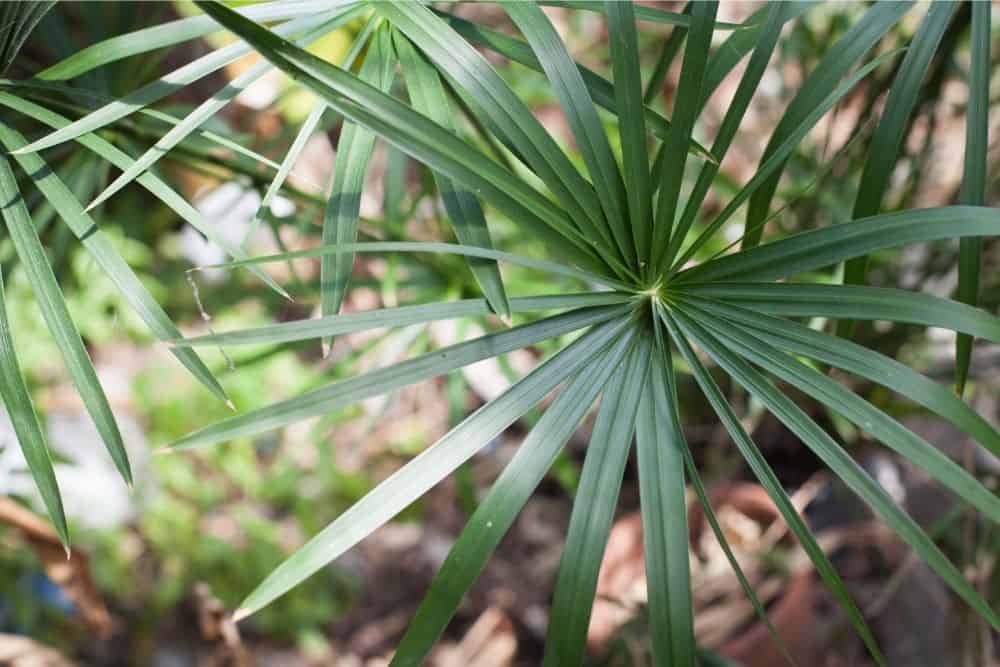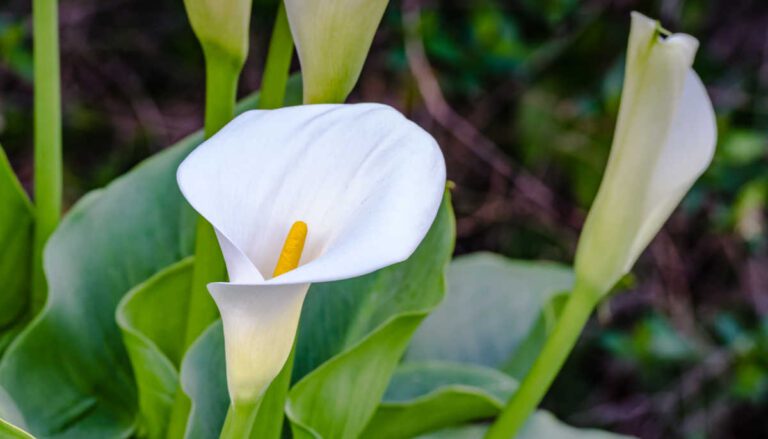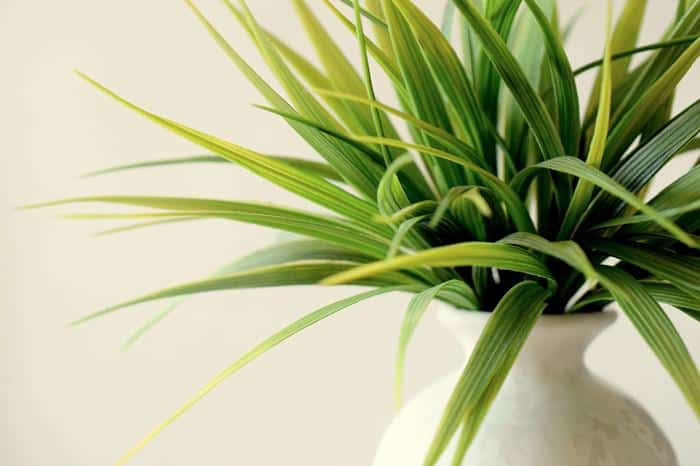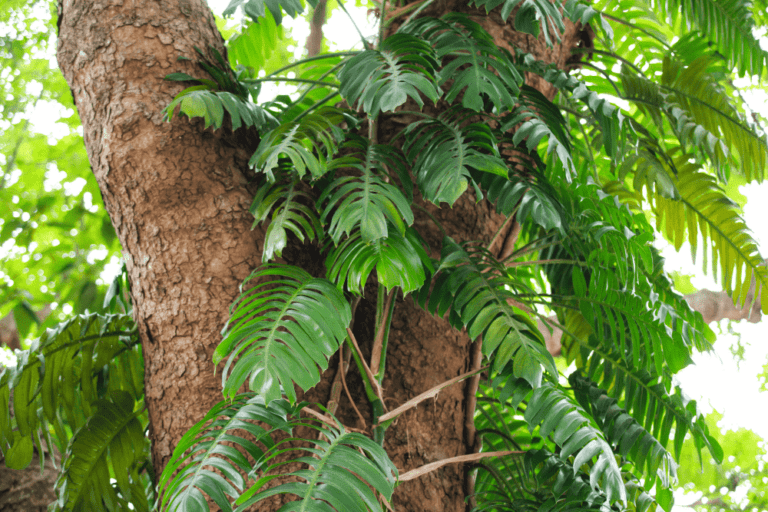The Ultimate Guide To Indoor Palm Trees
Palm trees are one of the best ways to liven up a room. Their towering structures and feathery leaves help to provide an aura of relaxation – which is also probably due to the plant’s association with their native tropical habitats!
Not only do palm trees help to make a living space look instantly more tropical, but they’re also brilliant “filler” plants.
Corner of the room empty? Stick a palm tree there and the space is filled immediately.
Problem is, despite there being around 2,600 species of palm trees in the world, there are far fewer palm trees that can be grown as indoor plants.
The best types of indoor palm trees are ones that don’t grow too tall and have low-maintenance care requirements, which is why you can’t simply buy any palm tree with the aim of keeping it inside.
Here is the ultimate guide to indoor palm trees!
Areca Palm (Dypsis Lutescens)
The Areca palm tree is often referred to by an abundance of nicknames, including the golden palm, butterfly palm, and bamboo palm.
The bamboo palm nickname is arguably the most appropriate thanks to the Areca’s distinctive bamboo-like fronds, making the room look instantly more lively.
These arched leaves also resemble butterfly wings when they move!
While Areca palms have a good tolerance for shade and low lighting, they thrive in bright and indirect sunlight. Not only do they thrive, but the bouncy fronds look lush in a bright room!
If you want to truly bring out the vivid greenery of the palm tree, make sure to keep the soil moist (not soggy) by regularly watering it. This is the best way to bring a sense of nature to your interior decor.
Unlike their tolerance to shade, Areca palms are notoriously intolerant of over-fertilizing.
This is what makes the species ideal for beginners who don’t want to worry about feeding their plant.
What’s more, the Areca palm tree has air purifying properties and works to keep its surrounding area sufficiently humid, so if you have any other tropical plants, place them near the Areca palm!
Care Requirements
- Soil: Well-draining and moist
- Water: Roughly every 2-4 days to maintain moisture
- Light: Bright and indirect sunlight or partial shade
- Temperature: 65-75 °F
- Humidity: 40-50%
- Fertilizer: Maximum of twice during the growing season
Parlor Palm (Chamaedorea Elegans)
If you’re worried about keeping up with the watering requirements of some palm tree species, look no further.
The Parlor palm is notorious for its drought tolerance and often thrives off neglect, making it the ideal palm tree for lazy gardeners and beginners!
The Parlor palm is one of the smaller indoor palm tree species on our list, which is ideal for those living in smaller apartments or rooms.
You can expect the plant to grow up to 3-4 feet tall if it is thriving. The fronds are thin yet crow in fluffy clusters, making the plant look fuller than it actually is, which is ideal for filling the space on a corner table or shelf.
As well as its tolerance to dry soil, the Parlor palm is also tolerant to shade. This means that while it prefers bright and indirect sunlight, it will happily thrive in areas of partial or full shade.
However, the one downside is that Parlor palms are prone to developing pests like spider mites, which is why it’s essential to keep the soil mostly dry to prevent infestations.
Care Requirements
- Soil: Well-draining and mostly dry
- Water: 1-2 weeks when the soil is completely dry
- Light: Bright filtered sunlight or partial/full shade
- Temperature: 65-85 °F
- Humidity: 50-60%
- Fertilizer: Monthly in spring and summer alongside watering
Kentia Palm (Howea Forsteriana)
Kentia palms offer the distinctive palm tree appearance, making them highly favorable amongst those who want to add some tropical decor to their home.
Not only are their bamboo-like fronds bright enough to liven up any room, but the plant is notoriously tolerant to partial and full shade without compromising the color of the leaves.
So, Kentia palms are suitable for virtually any room in a house, including the basement!
While Kentia palms are tolerant of shade, you’ll see their full potential when providing them with decent airflow and bright indirect sunlight.
They show their happiness through their growth, so the taller the plant is, the happier it is!
The maximum height of one of these plants when grown indoors is roughly 6 feet tall, but some are known to grow up to 10 feet.
The low-maintenance care requirements and tolerance to cold temperatures, shade, and watering makes this plant one of the most popular indoor palm tree species amongst hobbyists and beginners alike!
Care Requirements
- Soil: Well-draining
- Water: Once a week when the soil is completely dry
- Light: Bright filtered sunlight, or partial/full shade
- Temperature: 55-85 °F (with a tolerance of 25 °F maximum)
- Humidity: 49-55%
- Fertilizer: Monthly during spring and summer
Chinese Fan Palm (Livistona Chinensis)
The Chinese fan palm is undoubtedly one of the most stunning indoor palm tree species available.
Unlike the classic bamboo-like structure of most palm trees, the Chinese fan palm features tighter clusters of fronds that resemble stars or peacock feathers, making it a unique addition to any household.
Alongside their beautiful appearance, Chinese fan palms are fairly easy to look after. They prefer shade when young until they mature, wherein they prefer bright and indirect sunlight.
The watering requirements are straightforward because they prefer moist conditions, so you just have to water it when the top layer of soil is dry.
As they prefer a moist environment, Chinese fan palms benefit greatly from regular misting. It also only needs to be fed with a slow-release fertilizer once a year!
When fully grown, the Chinese fan palm can reach heights of 15 feet tall, so make sure its environment can accommodate for such heights.
If you don’t have the space for a plant this tall, you can opt for a dwarf subspecies like subglobosa.
Care Requirements
- Soil: Well-draining
- Water: Whenever the top layer of soil is dry (typically every 2-3 days)
- Light: Bright and indirect sunlight (partial shade when the plant is young)
- Temperature: 65-80 °F
- Humidity: 50% or higher
- Fertilizer: Once a year in spring
Majestic Palm (Ravenea Rivularis)
Also known as the Majesty palm, the Majestic palm is a classic and attractive indoor palm tree that can bring a sense of tropical nature to any interior.
While they can grow up to an impressive 90 feet in the wild, Majestic palms are slow-growing house plants that will typically reach heights of around 10 feet once fully grown.
Even though the Majestic palm can look similar to the Kentia palm, it is not a suitable option for beginners.
The care requirements for this plant are quite particular, and the species can be quite dramatic when the requirements aren’t met.
Too much sunlight and fertilizer, and the plant will scorch. Not enough sunlight or fertilizer, and the plant will dry up and stretch out towards sunlight.
Majestic palms also require a humid environment to survive, which is why they are best placed in the kitchen or bathroom.
As kitchens and bathrooms don’t always have the space to accommodate such large plants, you’ll have to come up with a way to provide humidity in a larger space.
We recommend investing in a humidifier, misting your plant daily, and placing the palm tree near other houseplants that also like humidity.
Care Requirements
- Soil: Well-draining, moist soil (succulent or peat-based potting mix is ideal)
- Water: Keep the soil moist but not waterlogged, roughly once a week or every 2-4 days
- Light: Bright and indirect sunlight
- Temperature: 65-85 °F
- Humidity: 40-60% (prefers high humidity)
- Fertilizer: Once or twice during spring and summer with a weak liquid fertilizer
Ponytail Palm (Beaucarnea Recurvate)
As the name suggests, the Ponytail palm is a stunning and exciting ornamental plant that features long hanging fronds, making the plant look like it has tendrils of long, curling hair.
The distinctive swollen trunk also helps to give the illusion of hair tied up in a ponytail!
Not only this, but the thick trunk helps to store water and nutrients like a reservoir, which is why the plant is so drought tolerant.
This palm tree species doesn’t grow past 4 feet tall, making it an ideal option for those with limited space such as a studio apartment.
They also tend to become pot-bound, which is why these plants are commonly found in one pot for the majority of their lives once they reach maturity.
Ponytail palms are ideal for beginners or lazy gardeners due to their low-maintenance care requirements.
As a result of their thick drunks, the plants only need to be watered fortnightly, and fertilized once or twice a year. Plus, the Ponytail palm isn’t toxic to pets or humans!
Care Requirements
- Soil: Well-draining, such as cactus potting mix
- Water: Once every two weeks or once a week in dry homes
- Light: Bright, indirect light
- Temperature: 60-80 °F
- Humidity: 40-50%
- Fertilizer: At least once a year during spring and summer
Lady Palm (Rhapis Excelsa)

The Lady palm is considered a small palm tree species that is ideal for rooms of all sizes. As it grows slowly, this is an ideal option for those who don’t want to fuss around with repotting.
They tend to grow up to 6 feet tall when grown indoors, and they are surprisingly bulky thanks to the dense clusters of stems and leaves, making them look nothing short of fabulous.
As the Lady palm is such a popular and sought after species in the plant world, they often come in multicolored variations for those who wish for a specific color.
However, keep in mind that these hybrid variations are often costly.
The care requirements of Lady palms aren’t too complicated. All they need is access to bright indirect sunlight, and a good watering and feeding routine. Keep in mind that they have a poor tolerance for shade.
Care Requirements
- Soil: Well-draining
- Water: Once a week
- Light: Bright, indirect sunlight
- Temperature: 60-80 °F
- Humidity: 50% or higher
- Fertilizer: Monthly during the growing season (between April and September) with diluted liquid fertilizer
Sago Palm (Cycas Revoluta)
Technically, this plant shouldn’t be on this list because despite its name, the Sago palm isn’t a palm tree.
It’s actually closely related to the conifer tree, but as they share similar characteristics with indoor palm trees, they’re a brilliant option for beginners wanting an introduction into owning an indoor palm tree.
The Sago palm is short and stocky, featuring a rounded trunk and stiff upright fronds that resemble a pineapple. When grown in a pot, the growth is stunted to a maximum of 2-3 feet, which is most ideal for those with limited space.
Despite their large trunks that work as water reservoirs, these plants prefer constant moisture to maintain their upright fronds.
The key to owning a Sago palm is to keep the plant away from direct sunlight and to maintain humidity.
This can be achieved by frequently misting the plant, investing in a humidifier, or placing the plant on a pebble tray. However, the plant is often tolerant of some shade and dry conditions.
Care Requirements
- Soil: Well-draining and high in organic matter
- Water: Whenever the top layer of soil is dry (every 2-4 days)
- Light: Bright and indirect sunlight
- Temperature: 65-75 °F
- Humidity: Above 50%
- Fertilizer: Monthly during growing season



